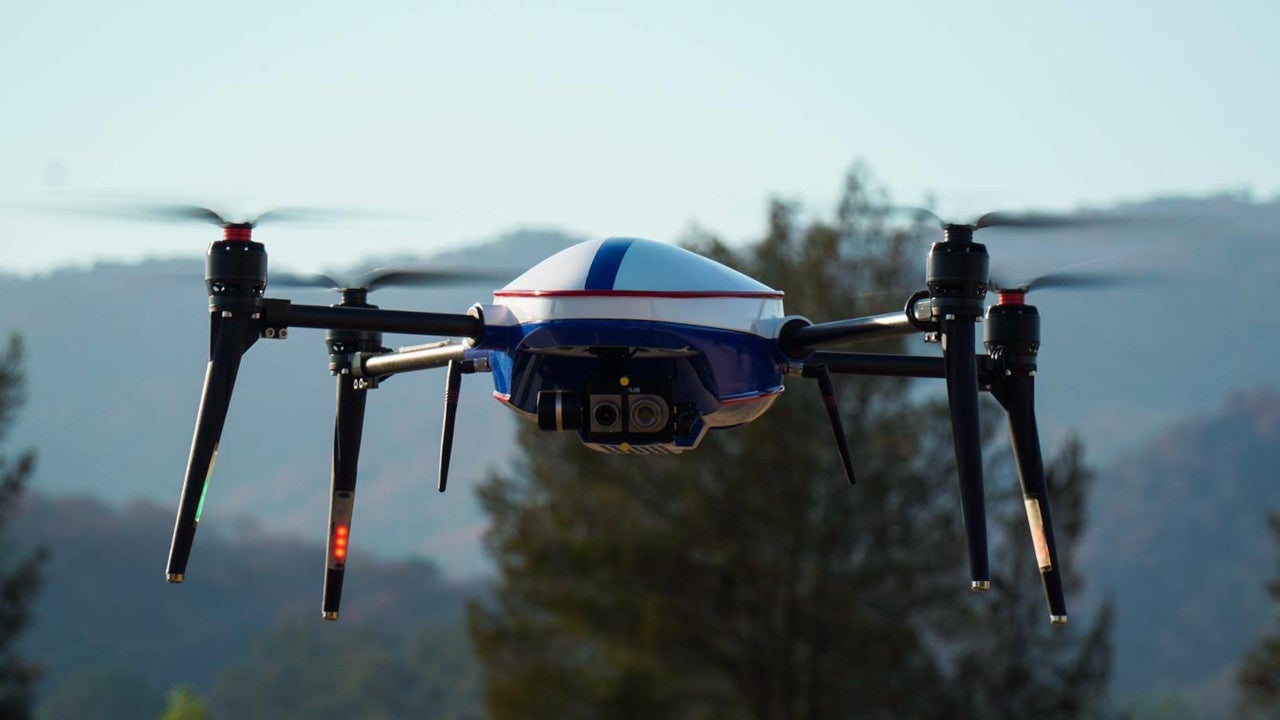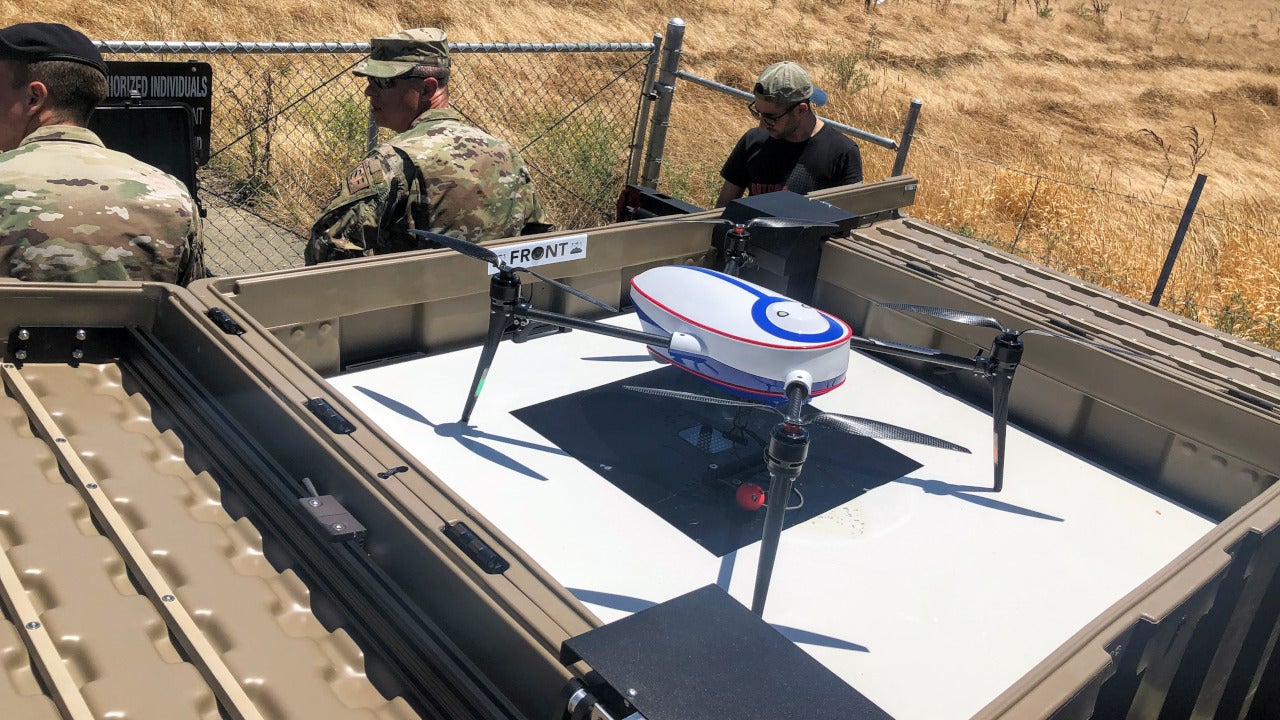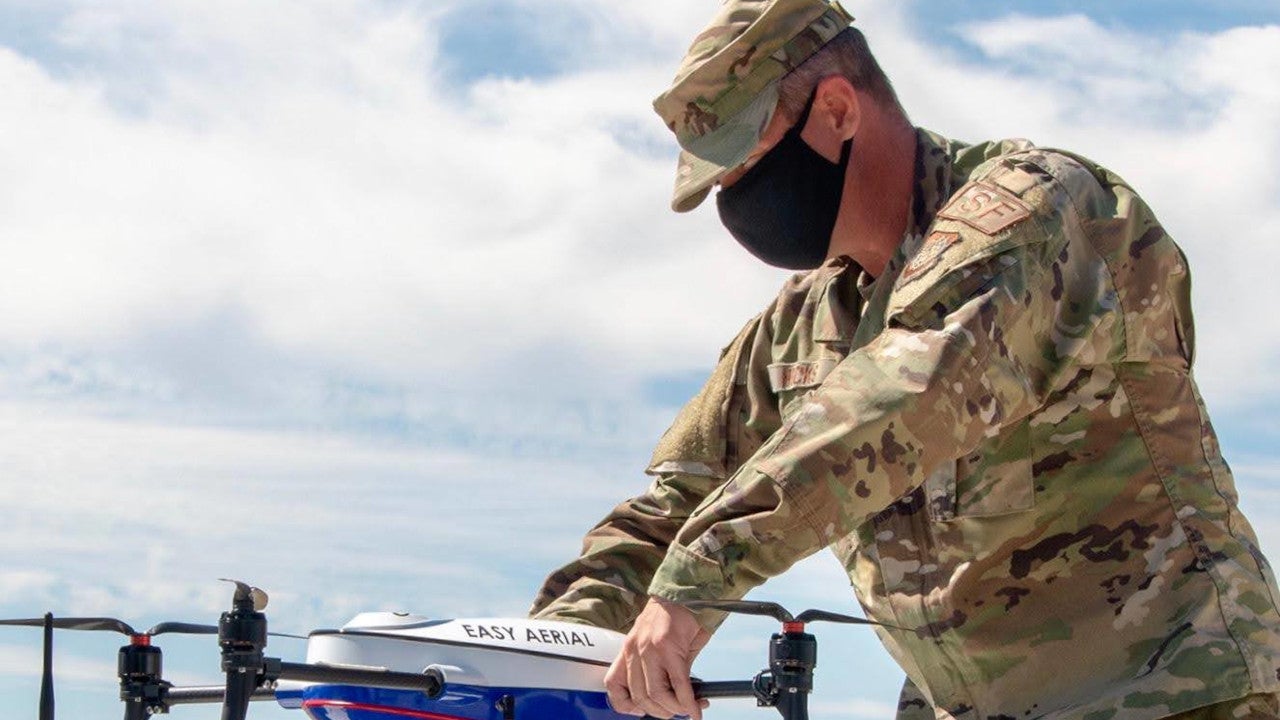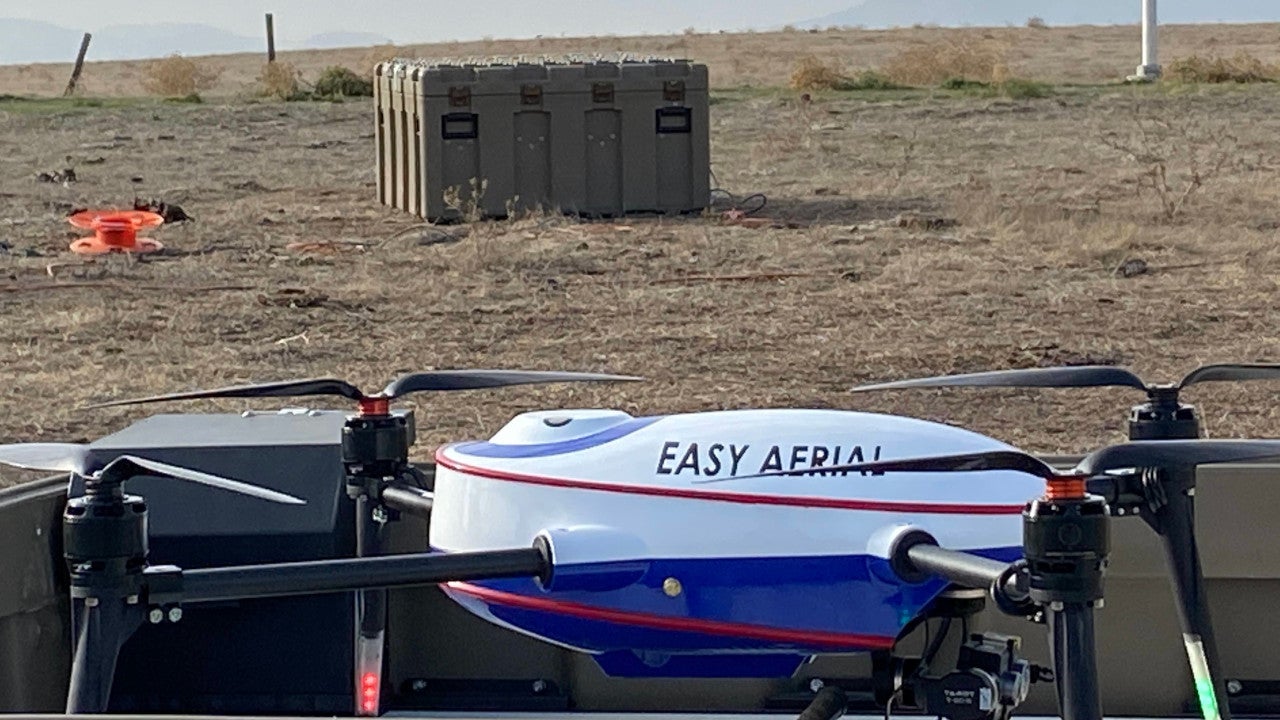Falcon drone is a lightweight and high-performance quadcopter developed by Easy Aerial, a US-based provider of autonomous drone-based monitoring solutions.
The unmanned system is designed to support civil engineering in operations such as fire response and maintenance for tail inspections.
It was flown as part of the launch of the Smart Air Force Monitoring System (SAFMS) by Travis Air Force Base’s (AFB) 60th Security Forces Squadron and Easy Aerial in California in December 2020.
A free-flight drone-in-a-box solution, SAFMS is the first automated drone-based monitoring and perimeter security system developed for the United States Air Force (USAF).
Developed along with a tethered version (SAFMS-T) by Easy Aerial and the USAF under the Small Business Innovation Research (SBIR) Phase II programme, the small unarmed aircraft supports the USAF’s efforts to boost warfighting capabilities, improve strategic deterrence and strengthen full-spectrum readiness. SAFMS meets the USAF’s operational requirements for AFB perimeter security and situational awareness.
Smart Aerial Monitoring System’s key components and features
Easy Aerial and USAF developed the drone along with its tethered configuration in two years. The Smart Aerial Monitoring System (SAMS) comprises the Falcon drone, Easy Guard ground station and Easy RMS software. It offers advanced, cost-effective and fully autonomous aerial monitoring solution.
Easy Guard system enables the drone to be autonomously land and take-off, eliminating the need for personnel to conduct operations. It serves as a mobile, self-sustaining ground station that charges the drone and provides weather protection. The ground station uses radio, cellular, or satellite communication to communicate operating commands.
A proprietary fleet management and communication software, Easy RMS delivers live HD video and monitoring data in real-time via radio or secured cellular communication. It is designed to deliver scheduled and on-demand missions.
Falcon drone design and specifications
Falcon is a strong and durable unmanned aerial vehicle made up of a carbon fibre frame. It can withstand all weather conditions and operate through fog, rain, snow, as well as high winds.
The unmanned aircraft has an overall length of 2.31m, width of 1.16m and height of 0.60m. With a total weight of 54.4kg, the aerial system can be easily deployed from a vehicle. The UAS is equipped with PixHawk 2.1 and ArduCopter firmware.
Payload and communications of Falcon drone
Falcon drone has the capacity to carry various payloads of up to 4.4lb of cargo including cameras, fence detection systems, ground sensors and virtual sensors. The payloads can also be replaced without the need for tools.
The unmanned aerial system communicates with the operator using a 2.4ghz onboard long-range custom video and data link. It can also be fitted with cellular (command, control and video) communication based on customer requirement.
Navigation and control
SAFMS receives a security trigger via stationary perimeter security components such as cameras and sensors, following which it can be automatically deployed from the base station. It then reaches the triggered site in autonomous mode to provide situational awareness.
The small unarmed aircraft returns to its base station upon the completion of the mission and is recharged to be ready for its subsequent mission. The system is equipped with an artificial intelligence algorithm which allows autonomous activation and engagement of the aerial vehicle.
Propulsion and performance
Falcon drone is powered by 400Kv motors and also includes 12,000mAh, 18,000mAh or 19,500mAh 6S 10C battery.
The propulsion system allows the drone to fly at a top speed of 105km/h. The drone can be charged up to 80% in 30 minutes and up to 100% in 50 minutes.
The maximum flight time of the drone is up to 50 minutes without any payload. Falcon can carry payloads for an extended flight time of up to 45 minutes while flying with FLIR Duo thermal camera on a gimbal.
The maximum range is up to 14km in single flight. The unmanned system has the capability to transmit digital HD video for up to 3.21km and analogue video for up to 12.87km.








